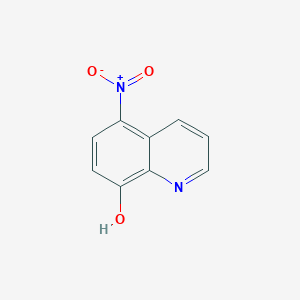-
Categories
-
Pharmaceutical Intermediates
-
Active Pharmaceutical Ingredients
-
Food Additives
- Industrial Coatings
- Agrochemicals
- Dyes and Pigments
- Surfactant
- Flavors and Fragrances
- Chemical Reagents
- Catalyst and Auxiliary
- Natural Products
- Inorganic Chemistry
-
Organic Chemistry
-
Biochemical Engineering
- Analytical Chemistry
- Cosmetic Ingredient
-
Pharmaceutical Intermediates
Promotion
ECHEMI Mall
Wholesale
Weekly Price
Exhibition
News
-
Trade Service
On September 17th Lava Therapeutics, a biotech company, announced the completion of an $83m round of C financing.
was originally funded by Novo Ventures and Sanofi Ventures, and the proceeds will be used to advance the development of next-generation dual-specific antibody pipelines and platforms that regulate gamma T cells.
T cells are natural surveillance cells of the immune system, constantly patrolling the body to identify and target tumor cells.
also play a role in bridding the innocular and adaptive immune systems, and there is great potential to target these cells in cancer treatment.
LAVA's dual-specific gamma T-cell convergence platform leverages the unique properties of these T-cells with the goal of developing a truly revolutionary cancer-targeted immunotherapy to improve the treatment of cancer patients.
Stephen Hurly, chief executive of LAVA Therapeutics, said the new round of funding was significant for LAVA and would help them advance the entry of bisse-specific gamma T-cell-linked antibodies into multiple concept-validated clinical trials.
trials are expected to begin in 2021 to investigate the safety and effectiveness of LAVA's innovative therapies for the treatment of solid and blood malignancies.
believes that the innovative dual-specific antibody developed by LAVA, which leverages the unique characteristics of V-9V-2 T cells (the main gamma-T-cell subtype in human exome blood), will provide a new type of T-cell immunotherapy that offers an advantage over existing tumor therapy.
is an emerging field in oncology, and its application in cancer immunotherapy lags far behind that of CD4 plus auxiliary T cells and CD8 plus cytotoxic T cells.
While most T-cell studies and clinical applications focus on alpha-beta T cells that express specific alpha beta T-cell receptors (T cell receptors, TCR), T-cells that express gamma TCR also play an important role in cancer immunity.
T cells have a lot in common with alpha beta T cells, such as the cytotoxic effect function, which can produce inflammatory cytokines, the biggest difference between the two is their relative dependence on the main tissue compatible complex (MHC) molecules.
the antigen recognition mechanism of gamma TCR does not bind to MHC molecules, the antigen recognition mechanism of gamma T cells is still elusive.
the difference between gamma T cells and alpha beta T cells, coupled with the relatively low number of gamma T cells in mammals, has led to an impact on understanding the role of these cells in tumor occurrence.
However, significant advances have been made in the past few years in the biology of cancer-related gamma T cells (below), revealing the powerful effects of these cells on tumors and other immune cells, and the role of gamma T cells as anti-tumor regulators and tumor-promoting regulators.
Figure 1 . . . . . . . . . . . . . . . . . . . . . . . . . . . . . . . . . . . . . . . . . . . . . . . . . . . . . . . . . . . . . . . . . . . . . . . . . . . . . . . . . . . . . . . . . . . . . . . . . . . . . . . . . . . . . . . . . . . . . . . . . . . . . . . . . . . . . . . . . . . . . . . . . . . . . . . . . . . . . . . . . . . . . . . . . . . . . . . . . . . . .
, the killing of tumor cells can be mediated through the expression of Tumour necrosis factor-related apoptosis-inducing ligand or the particle cell spit path (which leads to the secretion of perforation and granulase).
addition, after treatment with tumor-specific antibodies, gamma T cells can also target tumor cells through cytotoxic effects on which antibodies depend.
In the case of 4-1BB lipologic (4-1BBL) expression that stimulates NK cells, gamma T cells can also induce an anti-tumor immune response through the production of IFN gamma and the delivery of antigen cell function (which causes alpha beta T cell activation).
T cells can also induce antibody switches in B cells to promote protective body fluid response.
the production of GM-CSF, the T-cells can also regulate the immersion of dextry cells (DCs).
Figure 2 , the function and regulation mechanisms of anti-tumor gamma T cells (Source: Nature Reviews Cancer) Existing evidence suggests that gamma T cells do not recognize peptide antigens, but are effective in killing tumors and pathogens, mainly because they can identify tumor cells due to metabolism Abnormally secreted pyric acid metabolites DMAPP, IPP, and HMBPP (E)-1-hydroxy-2-methyl-but-2-enyl 4-diphosphate produced by pathogens.
these carobic acid metabolites are called phosphoantigens.
and some studies have revealed that the activation of nipple antigens on gamma T cells depends on trans-membrane celiac protein 3A1 (BTN3A1). The tumor-promoting function of
-T cells is mainly related to the production of leucocyte interleulin-17A (IL-17A), which has a variety of effects, including stimulating tumor cell proliferation, inducing angiogenesty and mobilizing inflammatory or immunosuppressive myelin cells.
Figure 3 , the function and regulation mechanism of tumor-promoting T cells (Source: Nature Reviews Cancer) Because it is not limited to MHC, most gamma T cells bypass one of the most common cancer immune escape mechanisms, the reduction of surface MHC Class I molecules.
strategies have been used to activate gamma T cells in the body and target tumour antigens, such as BTN3A1 antibodies, bispecific t cell bridgers, and in vitro amplification of t-cell over-transfer is another strategy in study.
figure 4 . . . strategies for enhancing the immunotherapy of gamma T cells outside the body (Source: Cellular and Molecular Immunology) In addition to LAVA, there are other companies that develop drugs based on gamma T cells. Examples include Gamma Delta Therapeutics, formerly known as Incysus Therapeutics, which recently filed an IPO with the Securities and Exchange Commission to raise $86 million; Adamate Biotherapeutics, ImCheck Therapeutics, and Pfizer Ventures, which last year took part in ImCheck's Round B financing.
table below lists some of the companies that are exploring the immunotherapy of gamma T cells. Table
1 is partly dedicated to the development of cellular immunotherapy for the company source: Cellular and Molecular Immunology Scientists in the field believe that since the detection of gamma T cells in 1984, the academic community has become more and more aware of the properties of gamma T cells, and believe that regulating these cells will contribute to cancer immunotherapy.
and increased interest in this area in the capital markets have made them more anticipated for the clinical application of gamma T-cell immunotherapy.
recent years, the industry and the investment community have invested a great deal of enthusiasm in this field due to the significant progress made in immunocell therapy represented by CAR-T.
is different from CAR-T therapy, which is based on alpha beta T cells, because the proportion of gamma T cells in the body's exometry T cells is much lower, so the scientific and industrial community pays more attention to it than alpha beta T cells.
and the characteristics of gamma T cells also present a difficult problem for their clinical application: how to obtain a large number of highly lethal gamma T cells in a relatively short period of time? As a postdoctoral student at Yale University in 1997, I began to do research related to gamma T cells, and later pioneered the discovery that gamma T cells mainly produce IFN-γ and play an important role in tumor immunity.
After returning to China in 2007 to work at Nan kai University, with the support of the Ministry of Science and Technology's 973 program, we further validated the role of gamma T cells in tumors, immunity, and hepatitis, while working on the optimization of the introviral amplification program for gamma T cells and the clinical transformation of xenon T cell therapy.
After many years of exploration, we have developed a new culture method (patented) that can massively amplification of human exosome T cells in-body, and for the first time in the world, clinical observations have found that allogeneic gamma T cells from healthy donors are safe and initially show efficacy in patients with advanced liver or lung cancer.
last month, we just published clinical trial data in the Nature sub-journal Cellular and Molecular Immunology.
safety, in Phase I clinical trials involving 132 patients (a total of 414 cell returns were completed), the return of iso-allogeneic gamma T-cells did not cause one serious side effect, and only some patients had a mild clinical response.
the incidence of low fever, red rash, diarrhea, nausea/vomiting and fatigue was 6.3 per cent, 1 per cent, 1.7 per cent, 4.3 per cent and 12.6 per cent, respectively, in 414 returns.
these reactions do not require additional treatment or treatment and will automatically recover within 24 hours.
efficacy, in 132 patients, 8 liver cancer patients and 10 lung cancer patients received ≥5 cell returns, the survival period was significantly extended.
follow-up observations as of June 2020 after treatment showed that the average survival time of 8 patients with liver cancer was extended to 23.1 months (up to 35 months) and that the average survival time of 10 lung cancer patients was extended to 19.1 months (up to 33 months).
these results have initially verified the efficacy of allogeneic gamma T cells, and provide an important basis for the further development of xenon T cells as a new type of anti-cancer immunotherapy.
, there is a very broad prospect for gamma T cells as immunocellular drugs.
the characteristics of non-reliance on MHC identification, cytokine-free storm and off-target effects, broad-spectrum anti-tumor, no gene modification, etc. have greatly overcome the shortcomings of CAR-T technology.
After the safety and efficacy of allogeneic gamma T cells have been fully demonstrated, we can scale up the culture, patients can provide "spot" when needed, compared to introcyte therapy, which not only eliminates the patient waiting time, but also makes the cost greatly reduced.
addition, isometre T cell therapy is also expected to solve the problem of immunocellular therapy for major infectious diseases, as these patients' own cells cannot be cultured and can only be used with allogeneic cells.
, however, there are still challenges that need to be overcome in the treatment of gamma T cells, and key issues such as large-scale culture, freezing and clinical efficacy verification need to be addressed urgently.
addition, further exploration of the molecular mechanisms of gamma T cells against tumors in the body is needed.
It is expected that in the next 3-5 years, the options for the adaptation of gamma T-cell immunotherapy will become clearer, some leading projects will enter Phase II/III clinical, and the development and application of new technologies may help to improve the effectiveness of these therapies.
2018, we have established a biotechnology company called de Kangmin focusing on the development and clinical transformation of cell immunotherapy for gamma T.
company has passed ethical approval in a number of triple-A hospitals, in hematomas, solid tumors, major infectious diseases and other fields to carry out clinical research.
hope that these new immunotherapies will truly benefit patients and create new opportunities to improve the treatment of multiple diseases.
: 1 s LAVA Therapeutics Announcs $83 million Series C Financing to Advance Novel Novel Immuno-Oncology Programs (Source: BUSINESS WIRE) 2 s Novo, Sanofi VC units lead Lava's $83M series C to fund gamma delta T-cell trials (Source: FierceBiotech) 3 s J.amp;J taps Lava to develop anti-cancer gamma-delta T-cell engagers (Source: FierceBiotech) 4?Silvao-Santos al. immune effectors with therapeutic potential in cancer. Nature Reviews Cancer (2019). Allogeneic V 9V 2 T-cell immunotherapy exhibits are notable clinical safety and prolongs the survival of patients with late-stage lung or liver cancer. Cellular and Molecular Immunology (2020). Cancer immunotherapy with t cells: many paths ahead of us. Cellular and Mo.







